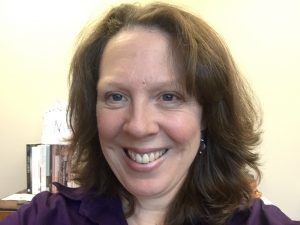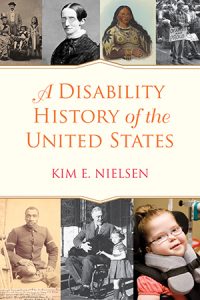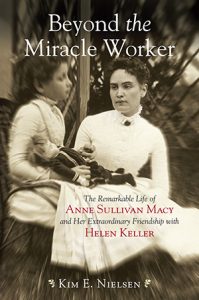Telling Women’s History: Three Questions and an Answer with Kim Nielsen
Dr. Kim Nielsen is Professor of Disability Studies at the University of Toledo, where she also teaches courses in History and Women’s & Gender Studies. Her scholarship explores disability, gender, and citizenship throughout U.S. history. Nielsen’s latest book is A Disability History of the United States (Beacon Press), the first analysis of disability throughout United States history and covers the period prior to European arrival through the present. Other books include Beyond the Miracle Worker: The Remarkable Life of Anne Sullivan Macy and Her Extraordinary Friendship with Helen Keller (Beacon, 2009) and The Radical Lives of Helen Keller (NYUP, 2004). Nielsen holds a Ph.D. in History from the University of Iowa.
She’s also a fellow Beacon Press author, which in my opinion is the Good Housekeeping Seal of approval for challenging and engaging writing on important subjects. (My fellow Beacon-ites are an impressive bunch. I see myself as the class clown in the group.)
Take it away, Kim.
What have you read lately that you loved?
I read Naomi Alderman’s The Power several months ago and haven’t been able to get it out of my head. It reads like a straightforward, captivating story, but the more one sits with it the more complicated, disturbing, and thought provoking it becomes. I had no idea of the beginning’s significance until the end. Next month my book club reads this book. I’ve picked it up again, am enjoying rereading it, and am eager to discuss it.
[Note from PT: How did I miss this one? Adding it to the reading list.]
What’s your next book about and when is it coming out?
My next book is Mrs. Dr. Anna Ott: A 19th Century Life of Money, Marriage, and Madness—and will be out in late 2019. This is a biography of a completely unknown woman who survived two tumultuous marriages, one of which included substantial domestic violence, garnered significant financial resources, served as a physician, and died after 20 years in an insane asylum. It’s a fascinating story and I’ve learned so much about marriage law, institutionalization, and the consequences of a stigmatized diagnosis.
What do you find most challenging or most exciting about researching historical women?
Women change their names when they get married—sometimes multiple times! Why?!? This often literally erases women historically and makes it difficult to find them. It is also a part of how family can subsume women in history in both subtle and direct ways.
My question for you: How did you come to love history?
One of my favorite things to do when I was small was curl up next to my grandmother and ask her “What did you do when you were a little girl?” From there it was a short step to reading biographies about historical women who ignored social boundaries and accomplished things—the kind that are written with the intention of inspiring young girls. My grade school’s revolving library owned a whole series of them. Every week a new one arrived and I snatched it before anyone else could get it, eager to read about Clara Barton, Madame Curie or Julia Ward Howe. (Just so you know, Women Warriors isn’t that kind of book.)
By the time I was in high school, I was that nerdy kid who hung out at the local historical society and Wilson Creek National Battlefield on the weekends.
(Drop in on tomorrow for another Telling Women’s History interview. I’ve got an entire month of some of my favorite history people talking about the work they do and how they do it. Next up: Stacy Cordery, author of Juliette Gordon Low: The Remarkable Founder of the Girls Scouts)







